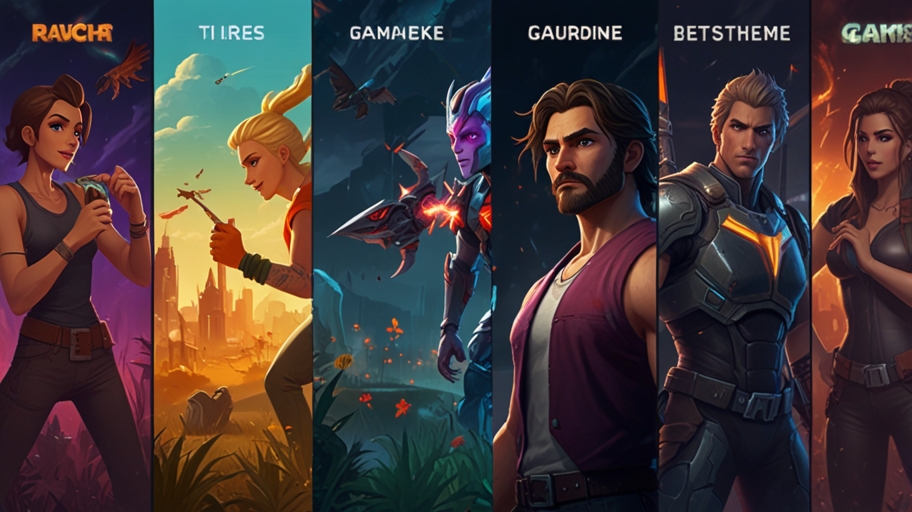Introduction
Video games offer endless hours of fun, but have you ever wondered how long it will take to finish one? That’s where “How Long to Beat” comes in—a handy concept that estimates game completion time. One exciting tool tied to this is game cards, which break down playtime based on your unique gaming style. Game cards can guide you whether you’re a casual player or a completionist. In this article, we’ll explore how game cards work, how they estimate your playtime, and which play style fits you best. Let’s dive in and make it simple to understand!
What Are Game Cards and How Do They Help?
Game cards are like cheat sheets for video games. They give you a quick look at important details, including how long it might take to beat a game. These cards are often found on websites, in manuals, or even created by gaming communities. The idea is straightforward: they match your play style to an estimated completion time.
For example, if you’re someone who rushes through the main story, the game card might say it takes 10 hours. But it could be 30 hours if you love exploring every corner. It saves you time and helps you pick games that fit your schedule. Game cards are built from data—think player reviews, developer info, and averages from people who’ve already played.
Why Play Style Matters in Game Completion Time
Your play style is the key to figuring out “how long to beat” a game. Not everyone plays the same way, which makes gaming so personal. Game cards usually split players into categories based on how they enjoy games. These categories help predict your playtime accurately.
Are you a speedrunner who skips side quests? Or you’re a collector who hunts every treasure. You get a solid estimate tailored just for you by checking the category that matches your habits. Let’s break down the main play styles and their meaning for your gaming journey.

Play Style Categories and Their Impact
Game cards typically divide players into three big groups. Each one changes how long it takes to finish a game. Here’s a look at them:
1. Main Story Only (The Rusher)
It is for players who focus on the core plot. You skip extras like side missions or hidden items. Game cards estimate the shortest time here—perfect if you’re busy or want the primary experience. For a game like The Legend of Zelda: Breath of the Wild, this might mean 30 hours instead of 100.
2. Main Story Plus Extras (The Balanced Player)
Here, you enjoy the main story but dabble in some side content. You could do a few extra quests or explore a little. Game cards give a middle-ground estimate, often the most popular choice. Using the same Zelda example, this could take around 60 hours.
3. Completionist (The Explorer)
Completionists go all out—every quest, collectable and secret. Game cards list the longest time for this group. Breath of the Wild might take 100+ hours if you’re this type. It’s a big commitment, but super rewarding!
By picking your category, game cards make it easy to plan your playtime.
How Game Cards Calculate Your Time
You might wonder: how do game cards come up with these numbers? It’s not magic—it’s a mix of accurate data and intelligent guesses. Developers might share an average playtime when the game launches. Then, players submit their times to sites like HowLongToBeat.com. These sites crunch the numbers and sort them by play style.
For instance, if 1,000 players beat a game, the site averages the times for rushers, balanced players, and completionists. Game cards pull from this data to give you a reliable range. Some even factor in difficulty settings or game updates, keeping estimates fresh.
Examples of Game Cards in Action
Let’s see how game cards work with real games. Here are two examples:
Super Mario Odyssey
- Main Story Only: 12 hours (you save Princess Peach).
- Main Plus Extras: 25 hours (you grab some extra moons).
- Completionist: 60 hours (every moon, every challenge).
The Witcher 3: Wild Hunt
- Main Story Only: 50 hours (straight to the end).
- Main Plus Extras: 100 hours (some side quests).
- Completionist: 200 hours (everything, including DLC).
See how the time jumps based on your style? Game cards lay it out clearly.

Picking the Right Play Style for You
Which category fits? Ask yourself a few questions:
- Do I skip cutscenes or watch everyone?
- Am I okay leaving treasures behind, or do I need them all?
- Do I play for fun or to master everything?
If you love quick wins, go for “Main Story Only.” If you like a mix, try “Main Plus Extras.” And if you’re obsessed with 100% completion, you’re a completionist. Game cards match your answers to a time estimate, so you never guess.
Benefits of Using Game Cards
Why bother with game cards? They’re a game-changer for a few reasons:
- Time Management: Know if a game fits your weekend or needs weeks.
- Game Choice: Pick titles that suit your pace.
- No Surprises: Avoid starting a 200-hour epic with 10 hours free.
Plus, they’re easy to read. Most game cards use simple charts or bullet points, so you get the info fast.
Where to Find Game Cards
Game cards pop up in lots of places. Websites like HowLongToBeat.com are goldmines—they’ve got user-submitted times for thousands of games. Steam or PlayStation Store pages sometimes include estimates, too. Even game manuals or fan forums might have them. Search the game’s name plus “how long to beat,” and you’ll find options.
Tips to Match Game Cards to Your Schedule
Want to use game cards like a pro? Try these ideas:
- Check Before You Buy: Look up the time estimate to avoid surprises.
- Mix Styles: If a game’s too long, skip some extras.
- Set Goals: Use the card’s numbers to pace yourself.
For example, if a card says 20 hours for the main story, you could play 2 hours a night and finish in 10 days. It’s that simple!

How Game Length Varies by Genre
Not all games are equal—genre plays a significant role. Game cards reflect this, too. Here’s a quick guide:
- Platformers (e.g., Mario): Short, around 10-20 hours.
- RPGs (e.g., Final Fantasy): Long, often 50-100+ hours.
- Shooters (e.g., Call of Duty): Medium, 10-30 hours.
Knowing the genre helps you trust the game card’s estimate even more.
Limitations of Game Cards
Game cards aren’t perfect. They’re based on averages, so your skill level or play speed might change things. A tricky boss could add hours, or you might breeze through faster than most. Updates or DLC can also stretch playtime beyond the card’s guess. Still, they’re a great starting point.
Why Game Cards Are a Must for Gamers
Ultimately, game cards take the mystery out of “how long to beat.” They’re simple, helpful, and tailored to you. Whether racing through a story or hunting every secret, these cards give you control. Next time you grab a game, check its card—you’ll thank yourself later.
References
- HowLongToBeat.com – A top site for game completion times.
- IGN.com – Game reviews often include playtime estimates.
- Steam Store – User reviews sometimes mention hours played.



